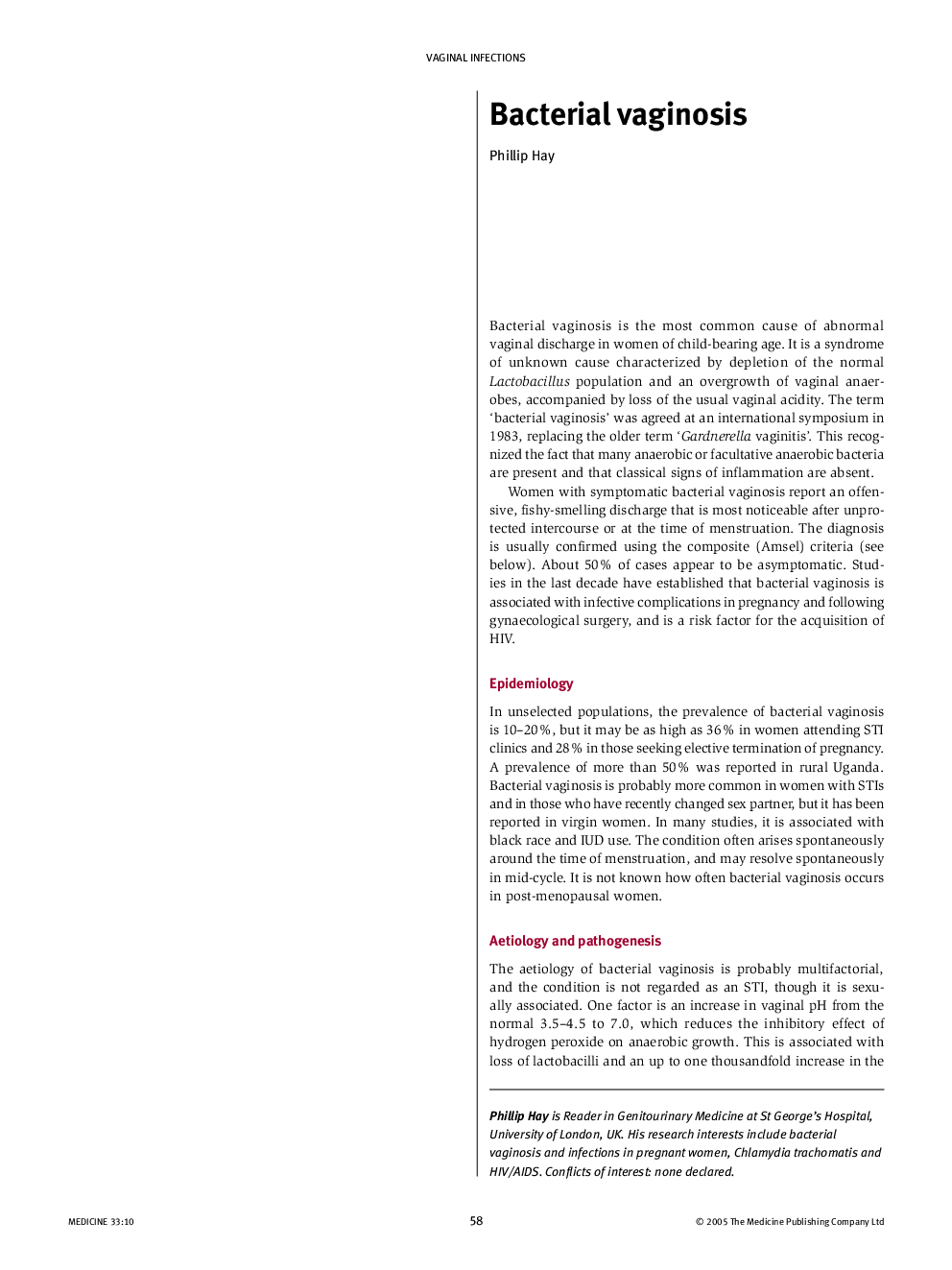| Article ID | Journal | Published Year | Pages | File Type |
|---|---|---|---|---|
| 9300543 | Medicine | 2005 | 4 Pages |
Abstract
Bacterial vaginosis is a common cause of abnormal discharge in women of child-bearing age. It is present in 10-20% women in the UK, and may recur or regress spontaneously. It is not regarded as an STI because it can occur in virgin women, but it is more common in sexually active women. Other associations include smoking, partner change, having a female partner with bacterial vaginosis, black ethnicity and IUD use. It is characterized by an offensive, fishy-smelling discharge and a high vaginal pH (> 4.5). The usual Lactobacillus-dominated vaginal flora is replaced by an overgrowth of anaerobic/facultative anaerobic organsims including Gardnerella vaginalis, Mycoplasma hominis and Bacteroides spp. Diagnosis is based on the composite Amsel criteria, incorporating clinical features and microscopy of vaginal fluid, or interpretation of Gram-stained vaginal smears using the Nugent or Hay-Ison criteria. Bacterial vaginosis usually clears with treatment with topical or oral metronidazole or clindamycin, but relapses within 1 month in about 30% of women. Women with frequent recurrences of symptomatic bacterial vaginosis experience embarrassment and frustration. Better means of preventing relapses are needed, preferably not involving repeated courses of antibiotics. Bacterial vaginosis is also a risk factor for acquisition of STIs, including Chlamydia and HIV. Prevention of bacterial vaginosis might aid HIV prevention and control of other STIs.
Keywords
Related Topics
Health Sciences
Medicine and Dentistry
Medicine and Dentistry (General)
Authors
Phillip Hay,
